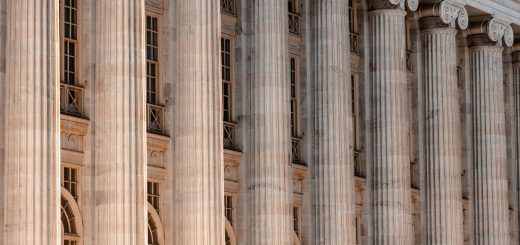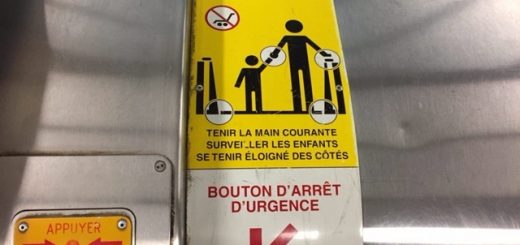Chevron Corp v Naranjo: Goliath’s Global Anti-Enforcement Injunction against David
The clichéd David vs. Goliath depiction is one which is often used when describing legal cases. But Ecuador’s Lago Agrio community vs. the Chevron Corporation is one legal battle which aptly fits the analogy.
The controversial case has a long history, involving alleged environmental violations in Ecuador’s Amazon region by Texaco (now Chevron) from 1964 to 1992, allegations of corruption, and litigation since 1993. Along the way there have been many twists and turns, a high public profile (Justice Lynch of the Second District Court even calling it “among the most extensively told in the history of the American federal judiciary”), as well as a critically acclaimed Sundance documentary produced about the conflict (which incidentally also became the subject of further litigation).
Now, a judgment by the United States Court of Appeals, Second Circuit Court (“Second Circuit Court”), provides the latest chapter on the almost two-decade legal roller coaster.
David Beats Goliath By A Landslide
The background story involves a conflict between the defendant Chevron Corporation (“Chevron”) and the plaintiff Lago Agrio (“LAP”), residents of the Ecuadorian Amazon region.
The plaintiffs allege that from 1964 to 1992 Chevron’s predecessor, Texaco, caused severe environmental damage and polluted the region during its oil extraction operation. Texaco ended its operation in the region in 1992, but in 1993 LAP filed a claim in the United States District Court for the Southern District of New York (“District Court”) for “a variety of environmental, health, and other tort claims related to the extraction activities.”
In that case, Aguinda v Texaco Inc, 142 F Supp 2d 534 (SD NY 2001), Justice Rakoff was presented with a classic conflict of laws scenario leading him to dismiss the claim due to international comity and forum non conveniens, given that the case clearly had a stronger link to Ecuador.
While that decision was appealed, Texaco entered into a settlement with the Ecuadorean government which allowed Texaco to escape liability in return for “environmental remediation projects.” The agreement was finalized in 1998, and subsequently in 2001, Chevron acquired Texaco. Yet, Ecuador and Chevron remain engaged in parallel litigation on the remediation issue.
Nevertheless, following the 2001 District Court decision, LAP continued their own respective claim in Ecuador’s legal system. After seven years of litigation, LAP won a major decision on 14 February 2011. On that date, the Ecuadorean trial court found Chevron liable for an unprecedented $17.2B in damages. However, LAP’s victory was short lived.
Global Anti-Enforcement Injunction against David
On 7 March 2011, in Chevron Corp v Donziger, 768 F Supp 2d 581 (SD NY 2011), Justice Kaplan of the District Court granted Chevron a global anti-enforcement injunction against LAP enforcing their claim. The injunction was attained under New York’s Uniform Foreign Country Money-Judgments Recognition Act [Recognition Act].
The Recognition Act allows judgement creditors to enforce foreign judgments in New York. However, the Recognition Act also allows for certain exceptions, such as where an alleged fraudulent judgment is to be enforced in New York.
In such cases, the Recognition Act allows for a global anti-enforcement injunction for potential debtors against the creditors of such a judgement. And this is exactly what Chevron successfully attained from the District Court against LAP.
However, another twist came in the most recent judgment of Chevron Corp v Naranjo, 2011 WL 4375022 (2d Cir 2011), in which the Second Circuit Court “vacated” the District Court’s injunction and stayed the proceedings pending a further decision. That decision came out on 26 January 2012.
Global Anti-Enforcement Injunction Is A Shield Not a Sword
In Chevron Corp v Naranjo, Justice Lynch, Justice Pooler, and Justice Wesley ruled that the District Court “erred in construing the Recognition Act to grant putative judgment-debtors a cause of action to challenge foreign judgments before enforcement of those judgments is sought.”
Justice Lynch, on behalf of the bench, wrote that challenging the validity of a foreign judgement under the Recognition Act may only occur as a defensive measure in response to enforcement (similar to the “shield not sword” doctrine of estoppel in English contract law). Justice Lynch further acknowledged that LAP had not taken any measures to enforce the judgement and may never attempt to do so in New York.
Justice Lynch wrote that the purpose of the Recognition Act is to facilitate enforcement and comity among nations rather than restrict it, which the Second Circuit Court found Chevron to be doing with its pre-emptive claim. Therefore Justice Lynch held that Chevron had “no legal basis for the injunction,” nor will it “until judgment-creditors affirmatively seek to enforce their judgment in a court governed by New York or similar law.”
Justice Lynch also highlighted the problematic scenarios that could arise from pre-emptive global enforcement injunctions. Justice Lynch points out these situations pre-emptively challenge the very validity of foreign courts and try to prevent them from adjudicating matters which come to them.
In summary, the Second Circuit Court reversed the District Court’s decision, vacated the injunction, and sent the case back to the District Court with instructions to dismiss Chevron’s declaratory judgment in its entirety.
Case Victory after Case Victory With No End in Sight
The decision by the Second Circuit Court’s Justice Lynch, Justice Pooler, and Justice Wesley, is unlikely to be the final chapter of this David vs. Goliath saga. While the decision is clearly a victory for LAP, the decision potentially leaves the door open for another claim against them under the Recognition Act, or similar legislation, should they decide to enforce the judgement in New York or elsewhere in the United States. It is clear that the judgement will require enforcement somewhere, and to truly get at the assets of Chevron, that enforcement attempt will likely occur in the United States (especially given that the Chevron Corporation is headquartered in San Ramon, California).
With the health, environmental, and other problems facing the LAP due to the alleged violations by Chevron, simply having a declaratory decision in Ecuador is unlikely to suffice, and an enforcement of the Ecuadorian decision is essential to the vindication of their claims. Yet even if LAP decides to tackle the obstacles they will likely face in enforcing the unprecedented $17.2B decision in the United States, will this David have the resources to win the legal war of attrition against Goliath, one who happens to be one of the twenty largest public companies in the world?
The litigation has gone on for almost twenty years and the end does not appear to be near. As the plaintiffs grow old and potentially expire due to the very violations they have been attempting to seek redress for, and even with a landmark decision vindicating their claim in their hands, can the modern day David beat Goliath? Even when the onerous legal system meant to support David instead further empowers the already powerful Goliath?







Join the conversation